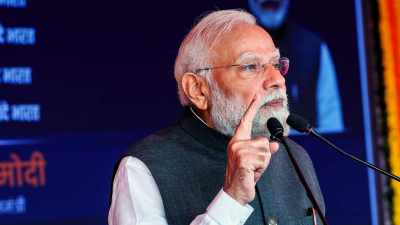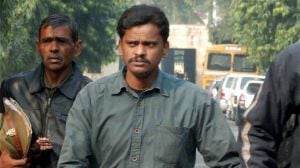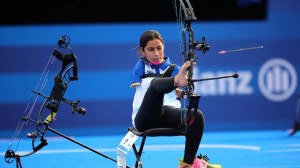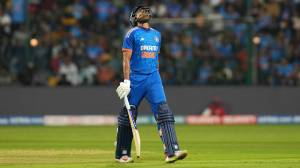Priya Kumari Shukla is a Senior Copy Editor in the Indian Express (digital). She contributes to the UPSC Section of Indian Express (digital) and started niche initiatives such as UPSC Key, UPSC Ethics Simplified, and The 360° UPSC Debate. The UPSC Key aims to assist students and aspirants in their preparation for the Civil Services and other competitive examinations. It provides valuable guidance on effective strategies for reading and comprehending newspaper content. The 360° UPSC Debate tackles a topic from all perspectives after sorting through various publications. The chosen framework for the discussion is structured in a manner that encompasses both the arguments in favour and against the topic, ensuring comprehensive coverage of many perspectives. Prior to her involvement with the Indian Express, she had affiliations with a non-governmental organisation (NGO) as well as several coaching and edutech enterprises. In her prior professional experience, she was responsible for creating and refining material in various domains, including article composition and voiceover video production. She has written in-house books on many subjects, including modern India, ancient Indian history, internal security, international relations, and the Indian economy. She has more than eight years of expertise in the field of content writing. Priya holds a Master's degree in Electronic Science from the University of Pune as well as an Executive Programme in Public Policy and Management (EPPPM) from the esteemed Indian Institute of Management Calcutta, widely recognised as one of the most prestigious business schools in India. She is also an alumni of Jamia Milia Islamia University Residential Coaching Academy (RCA). Priya has made diligent efforts to engage in research endeavours, acquiring the necessary skills to effectively examine and synthesise facts and empirical evidence prior to presenting their perspective. Priya demonstrates a strong passion for reading, particularly in the genres of classical Hindi, English, Maithili, and Marathi novels and novellas. Additionally, she possessed the distinction of being a cricket player at the national level. Qualification, Degrees / other achievements: Master's degree in Electronic Science from University of Pune and Executive Programme in Public Policy and Management (EPPPM) from Indian Institute of Management Calcutta ... Read More
UPSC Key: Atal Bihari Vajpayee, Appointment of Governors and Belagavi session 1924
Why good governance day is relevant to the UPSC exam? What is the significance of topics such as the regenerative farming, Run-of-the-river (RoR) hydropower projects in the Himalayan states and Enforcement Directorate, on both the preliminary and main exams? You can learn more by reading the Indian Express UPSC Key for December 25, 2024.
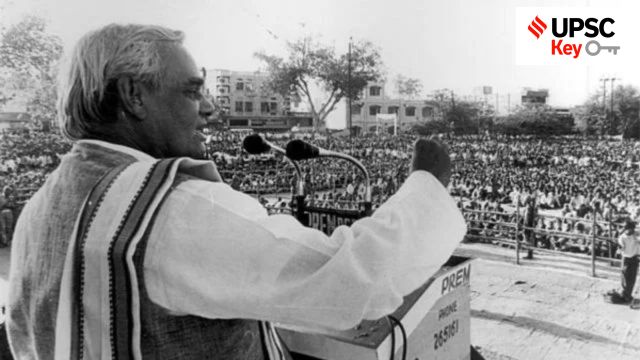 UPSC Key December, 2024: Here's what you should be reading from the December 25, 2024 edition of The Indian Express
UPSC Key December, 2024: Here's what you should be reading from the December 25, 2024 edition of The Indian Express Important topics and their relevance in UPSC CSE exam for December 25, 2024. If you missed the December 24, 2024 UPSC CSE exam key from the Indian Express, read it here
FRONT PAGE
SC red line for ED: Can’t copy, access content from laptop, mobile phones
Syllabus:
Preliminary Examination: Indian Polity and Governance-Constitution, Political System, Panchayati Raj, Public Policy, Rights Issues, etc.
Mains Examination:
• General Studies II: Statutory, regulatory and various quasi-judicial bodies.
• General Studies III: Money-laundering and its prevention
What’s the ongoing story: In a significant order that could prompt a rethink by probe agencies before they seek to confiscate mobile phones or laptops of citizens for alleged crimes, the Supreme Court has restrained the Enforcement Directorate (ED) from accessing and copying content from electronic devices seized during searches conducted on “lottery king” Santiago Martin, his relatives and employees in November.
Key Points to Ponder:
• In recent years, many political cases are handled by the Enforcement Directorate (ED)-Discuss role and function of the Enforcement Directorate
• Enforcement Directorate is a statutory body-True or False?
• Directorate of Enforcement (ED) comes under which Ministry or Organisation?
• The Directorate of Enforcement is a multi-disciplinary organization mandated with investigation of offence of money laundering and violations of foreign exchange laws. The statutory functions of the Directorate includes enforcement of certain acts-What are those acts?
• What makes Enforcement Directorate so powerful?
• What can be the implications of the Supreme Court’s ruling in the Santiago Martin case on the investigative powers of the Enforcement Directorate (ED)?
• What are the legal and ethical implications of unrestricted access to digital devices by investigative agencies?
Key Takeaways:
• The searches were conducted by the ED in 22 places in six states following a complaint by Meghalaya Police, which alleged that Future Gaming and Hotel Services Private Limited had “illegally” captured the lottery business in the state. The searches had yielded Rs 12.41 crore in cash.
• Santiago Martin’s company Future Gaming was the single largest donor of electoral bonds, having purchased Rs 1,368 crore in bonds between 2019 and 2014. It donated across party lines — Trinamool Congress was its biggest beneficiary at Rs 542 crore, DMK came a close second at Rs 503 crore. YSR Congress redeemed Rs 154 crore and BJP Rs 100 crore.
• The two-page order, passed by Justices Abhay S Oka and Pankaj Mithal on December 13, ordered that the Future Gaming case be “heard along with other connected cases”.
• The four cases listed in Future Gaming’s petition include those filed by employees of Amazon India challenging ED’s demands to produce their electronic devices and the Newsclick case, in which the petitioners are seeking guidelines from the Supreme Court on seizure of laptops and telephones by Delhi Police in 2023.
• In their plea, the petitioners sought to “protect their Constitutional and fundamental rights, more particularly, the fundamental right of privacy”. “The information stored on personal digital devices is deeply intimate, personal and more revealing about an individual’s life that anything held at a physical place…,” they argued.
• According to the officials, ED had recently attached properties valued at Rs 622 crore linked to the Future Gaming group. Besides, the ED had several other important ongoing cases against Santiago Martin and Future Gaming, they said.
Do You Know:
• The Enforcement Directorate (ED) is a premier financial investigation agency in India, operating under the Ministry of Finance, Department of Revenue. It enforces the Prevention of Money Laundering Act (PMLA), 2002, and the Foreign Exchange Management Act (FEMA), 1999. The ED’s primary responsibilities include investigating money laundering activities, confiscating assets acquired through illegal means, and ensuring compliance with foreign exchange regulations.
• The Supreme Court order asked the ED “not to access and copy” the contents of the mobile phone of Santiago Martin and any of the long list of electronic devices belonging to his company’s employees.
• The judges also stayed the summons issued by the ED under the PMLA (Prevention of Money Laundering Act) “to the extent that they require the presence of the persons mentioned therein for the purpose of extraction of data stored in the respective digital devices”.
• Lawyer Rohini Musa, who filed the 234-page petition, told The Indian Express that the Supreme Court order could become an important precedent for other ongoing cases.
Other Important Articles Covering the same topic:
📍Police notice to Kerala journalist for phone over report triggers a furore
UPSC Practice Prelims Question Covering similar theme:
1. Which of the following rights was upheld by the Supreme Court’s ruling in the Santiago Martin case?
(a) Right to property under Article 300A
(b) Right to privacy under Article 21
(c) Right to equality under Article 14
(d) Right to freedom of expression under Article 19
Former Home Secy Bhalla is Governor of Manipur, Arif Khan goes to Bihar
Syllabus:
Preliminary Examination: Indian Polity and Governance-Constitution, Political System, Panchayati Raj, Public Policy, Rights Issues, etc.
Mains Examination:
• General Studies II: Appointment to various Constitutional posts, powers, functions and responsibilities of various Constitutional Bodies.
• General Studies II: Functions and responsibilities of the Union and the States, issues and challenges pertaining to the federal structure, devolution of powers and finances up to local levels and challenges therein
What’s the ongoing story: The government on Tuesday announced new gubernatorial appointments, including former Union Home Secretary Ajay Kumar Bhalla as Governor of Manipur and former Army Chief General V K Singh as Governor of Mizoram.
Key Points to Ponder:
• Office of Governor-know the historical background
• How powerful is a Governor?
• What are the constitutional provisions and conventions governing the appointment of Governors in India?
• What is role of governor in legislative procedure in state legislature?
• How does the recent appointment of former bureaucrats as Governors reflect on the federal structure of the country?
• Governors are often considered “agents of the Centre.” Discuss this perception with examples from recent appointments, including former Home Secretary Bhalla and Arif Mohammad Khan.
• Assess the relevance of the Governor’s role in contemporary Indian politics.
• “The role of Governors has often been questioned in the context of maintaining federal balance in India.”-How far you agree with the statement?
• Examine the role of Governors in handling sensitive states like Manipur, which have witnessed socio-political unrest.
• How can Governors ensure a balance between the Centre’s directives and state interests?
• Every bill, after it is passed by the assembly or by both the Houses in case of a bicameral legislature, is presented to the governor for his assent. There are four alternatives before the governor-what are they?
• If the governor gives his assent to the bill, then what happens with the bill?
• If the governor withholds his assent to the bill, then what happens?
• The Sarkaria Commission, set up in 1983 to look into Centre-state relations, proposed certain points for the selection of Governors-Know them in detail
• What Punchhi Committee, constituted in 2007 on Centre-state relations said on selection the Governor?
• The Punchhi Committee recommended deleting the “Doctrine of Pleasure” from the Constitution-What is “Doctrine of Pleasure”?
Key Takeaways:
• Among the other appointments by President Droupadi Murmu on Tuesday are: Kerala Governor Arif Mohammed Khan as Governor of Bihar; Mizoram Governor Dr Hari Babu Kambhampati as Governor of Odisha; and Bihar Governor Rajendra Vishwanath Arlekar as Governor of Kerala.
• The choice of Bhalla as Manipur Governor is significant as the Centre has been struggling to control the ethnic violence in the state for over one-and-a-half years. Bhalla was Union Home Secretary when the violence began on May 3, 2023.
• Bhalla, who retired in August this year, will be expected to use his experience as Union Home Secretary to check the violence and find a way to bring the warring parties to the negotiating table.
• As Kerala Governor, former Congress leader Arif Mohammed Khan has had several run-ins with the CPI(M) government led by Chief Minister Pinarayi Vijayan. His move to Bihar is significant as the state is set to go to polls next year.
Do You Know:
• Article 153 of the Constitution says “There shall be a Governor for each State.” A few years after the commencement of the Constitution, an amendment in 1956 laid down that “nothing in this article shall prevent the appointment of the same person as Governor for two or more States”.
• Article 155 says that the “Governor of a State shall be appointed by the President by warrant under his hand and seal”.
• Under Article 156, “the Governor shall hold office during the pleasure of the President”, but his normal term of office will be five years. If the President withdraws her pleasure before the completion of five years, the Governor has to step down. Since the President acts on the aid and advice of the Prime Minister and the Union Council of Ministers, in effect, the Governor is appointed and removed by the central government.
• Articles 157 and 158 lay down the qualifications of the Governor and the conditions of his office.
• The Governor must be a citizen of India and should have completed the age of 35 years. The Governor should not be a member of Parliament or a state legislature, and must not hold any other office of profit.
• In 2001, the National Commission to Review the Working of the Constitution set up by the Atal Bihari Vajpayee government, had noted, “… Because the Governor owes his appointment and his continuation in the office to the Union Council of Ministers, in matters where the Central Government and the State Government do not see eye to eye, there is the apprehension that he is likely to act in accordance with the instructions, if any, received from the Union Council of Ministers… Indeed, the Governors today are being pejoratively called the ‘agents of the Centre’.”
Other Important Articles Covering the same topic:
📍Explained: Governor’s role, in review
Previous Year Prelims Question Covering similar theme:
2. Which one of the following statements is correct? (2013)
(a) In India, the same person cannot be appointed as Governor for two or more States at the same time
(b) The Judges of the High Court of the States in India are appointed by the Governor of the State just as the Judges of the Supreme Court are appointed by the President
(c) No procedure has been laid down in the Constitution of India for the removal of a Governor from his/her post
(d) In the case of a Union Territory having a legislative setup, the Chief Minister is appointed by the Lt. Governor on the basis of majority support
Laptop manufacturing: Import nods likely to be linked to local capacity
Syllabus:
Preliminary Examination: Economic and Social Development-Sustainable Development, Poverty, Inclusion, Demographics, Social Sector Initiatives, etc.
Mains Examination: General Studies III: Indian Economy and issues relating to planning, mobilization, of resources, growth, development and employment.
What’s the ongoing story: To reduce import dependence and boost domestic manufacturing of laptops and other IT hardware items, the Union government may link import permissions to domestic capacity expansion going forward, The Indian Express has learnt.
Key Points to Ponder:
• How this initiative can impact India’s electronics sector and its alignment with the Atmanirbhar Bharat initiative?
• What is the role of the Production Linked Incentive (PLI) scheme in boosting domestic manufacturing of laptops and other IT hardware in India?
• What challenges does the Production Linked Incentive (PLI) scheme face in achieving its objectives?
• Evaluate the pros and cons of India’s laptop import policy in the context of global trade dynamics.
• How does the government’s policy on laptop imports contribute to reducing India’s trade deficit? Examine its potential impact on domestic industries, employment, and exports.
• “Local capacity building in electronics manufacturing is crucial for India to become a global hub for IT hardware.” Discuss the role of infrastructure, skilled labour, and technology in achieving this goal.
Key Takeaways:
• The government is also considering the introduction of a credit system for such imports, with a final decision likely once domestic production in India reaches a critical threshold.
• The strategy, a source said, mirrors the approach that successfully attracted investment in the tyre manufacturing sector where the government temporarily eased import restrictions on certain tyre categories, contingent on establishing local manufacturing facilities.
• In 2020, the import of ‘New Pneumatic Tyres’ was classified under the ‘restricted category’. However, in 2023, the Ministry of Commerce and Industry relaxed the guidelines for tyre manufacturers who committed to investing in India through “brownfield or greenfield projects for manufacturing tyres within the restricted category”. As a result, global tyre manufacturers such as Bridgestone, Michelin and Goodyear pledged investments worth over Rs 1,100 crore in India.
Do You Know:
• The use of import permissions to promote domestic manufacturing in “strategic sectors” arises as India cannot increase duties on laptops, PCs and similar IT products, which currently attract zero duty under the commitments made in the Information Technology Agreement of 1997 at the World Trade Organization (WTO).
• China is the world’s largest exporter of PCs and laptops, holding a dominant market share of 81 per cent. In 2022, China’s global exports of these items were valued at $163 billion.
• In 2023, the Ministry of Electronics and Information Technology (MeitY) notified a revamped version of the Production Linked Incentive (PLI) scheme for IT hardware to encourage manufacturers to increase local production through subsidies.
• In the financial year 2023-24, India imported electronic components worth over $12 billion from China and $6 billion from Hong Kong, with the two regions accounting for more than half of India’s total electronic imports.
• Over the past five years, electronics imports from China and Hong Kong have significantly exceeded imports from other major manufacturing hubs such as South Korea, Japan, Taiwan and all ASEAN countries combined.
• In FY24, electronic component imports stood at $34.4 billion, making them the fifth-largest commodity imported into India, following crude oil, gold, petroleum products, and coal, according to data from the Ministry of Commerce
Other Important Articles Covering the same topic:
📍The new restriction on Personal Computers/laptop imports: Why the move, and its potential impact
UPSC Practice Prelims Question Covering similar theme:
3.Which of the following best describes the term ‘import cover’, sometimes seen in the news? (GS1, 2016)
(a) It is the ratio of value of imports to the Gross Domestic Product of a country
(b) It is the total value of imports of a country in a year
(c) It is the ratio between the value of exports and that of imports between two countries
(d) It is the number of months of imports that could be paid for by a country’s international reserves
Previous year UPSC Mains Question Covering similar theme:
📍How would the recent phenomena of protectionism and currency manipulations in world trade effect macroeconomic stability of India? (GS3, 2018)
THE SECOND PAGE
Panel flags concern over redesign of Sikkim dam washed away in ’23, defers nod
Syllabus:
Preliminary Examination: Indian and World Geography-Physical, Social, Economic Geography of India and the World.
Mains Examination:
• General Studies I: Important Geophysical phenomena such as earthquakes, Tsunami, Volcanic activity, cyclone etc., geographical features and their location-changes in critical geographical features (including water-bodies and ice-caps) and in flora and fauna and the effects of such changes.
• General Studies II: Government policies and interventions for development in various sectors and issues arising out of their design and implementation.
• General Studies III: Disaster and disaster management.
What’s the ongoing story: A Union environment ministry expert panel has expressed serious concerns about the redesign of the 1,200 MW Teesta-III Chungthang Dam in Sikkim, which was washed away after a glacial lake outburst in October 2023, and deferred its nod for restarting the project with a new dam.
Key Points to Ponder:
• Know about Sikkim flood 2023 in detail
• Map Work-Sikkim, Lhonak Lake and River Teesta
• What are the environmental, social, and economic implications of reconstructing dams in regions like Sikkim?
• Discuss the role of the Environmental Impact Assessment (EIA) process in evaluating large infrastructure projects like dams.
• How Environmental Impact Assessment (EIA) process be strengthened to address ecological concerns in fragile regions like the Himalayas?
• “Climate change and extreme weather events are increasing the vulnerability of dam projects in India.” Examine this statement in the context of the 2023 Sikkim dam disaster.
• What are the challenges faced by the Environment Ministry in balancing developmental needs with ecological concerns?
• Run-of-the-river (RoR) hydropower projects in the Himalayan states-what are the issues and challenges?
• What Ravi Chopra committee which was constituted by the Supreme Court says about the developmental project in Himalayan States?
Key Takeaways:
• The expert appraisal committee (EAC) appraising hydroelectric and river-valley-sector projects said it had concerns regarding the dam’s design and stability and its ability to withstand potential natural disasters in the future. It also decided to carry out a site visit before making any recommendation on restarting the project.
• Government enterprise Sikkim Urja Limited has sought an amendment to the project’s old environmental clearance as it has proposed to redesign the project dam. It wants to replace the washed-away, concrete-faced rockfill dam with a concrete gravity dam.
• However, the EAC was not convinced and during the deliberations held on November 30, it decided to seek the views of the Central Electricity Authority (CEA) on the proposed modifications.
• The committee also thought it prudent to carry out a thorough review of the proposed modifications to ensure the structural resilience and safety of the dam, particularly given the region’s susceptibility to extreme hydrological events, as per minutes of the EAC meeting.
• While deferring the proposal, it formed a sub-committee of two EAC members, and representatives of the CEA, the Central Water Commission and the Union environment ministry who will visit the project site.
Do You Know:
• On the intervening night of October 3 and October 4, 2023, an ice avalanche hit the South Lhonak Lake, located at an altitude of 5,200 metres, breaching the glacial lake. The avalanche created giant waves, leading to a glacial lake outburst flood (GLOF), and triggered a flash flood downstream in Teesta.
• The force of the floodwaters breached the Chungthang dam, exacerbating the floods, killing 40 people across four districts of Sikkim. Across Mangan, Gangtok, Pakyong, and Namchi districts, about 100 villages were affected and 76 people were reported missing.
• The Teesta-III project is in Mangan district and utilises a drop of about 800m in the Teesta River between Chungthang and Sankalang villages. The flash floods triggered by the GLOF event had overtopped the project dam and flooded the underground powerhouse, bringing power generation to a halt.
• Glacial lakes, like the South Lhonak Lake, are large bodies of water that sit in front of, on top of, or beneath a melting glacier. As they grow larger, they become more dangerous because glacial lakes are mostly dammed by unstable ice or sediment composed of loose rock and debris. In case the boundary around them breaks, huge amounts of water rush down the side of the mountains, which could cause flooding in the downstream areas. This is called glacial lake outburst floods or GLOF.
• GLOF can be triggered by several reasons, including earthquakes, extremely heavy rains and ice avalanches, Tom Robinson, lecturer in Disaster Risk & Resilience at the University of Canterbury (New Zealand), told The Indian Express in February 2023.
“These lakes are also often found in steep, mountainous regions, which means landslides or ice avalanches can sometimes fall directly into the lakes and displace the water, causing it to over-top the natural dam and flood downstream,” he added.
• In 2013, one such event took place in Uttarakhand’s Kedarnath when the region witnessed flash floods along with a GLOF caused by the Chorabari Tal glacial lake, killing thousands of people.
Other Important Articles Covering the same topic:
UPSC Practice Prelims Question Covering similar theme:
4. The Teesta River, where the washed-away Sikkim dam is located, is a tributary of which of the following major rivers?
(a) Brahmaputra
(b) Ganga
(c) Yamuna
(d) Godavari
Previous year UPSC Mains Question Covering similar theme:
📍Vulnerability is an essential element for defining disaster impacts and its threat to people. How and in what ways can vulnerability to disasters be characterized? Discuss different types of vulnerability with reference to disasters. (2019, GS3)
GOVT & POLITICS
Syllabus:
Preliminary Examination: Indian National Movement.
Mains Examination: General Studies I: The Freedom Struggle — its various stages and important contributors/contributions from different parts of the country.
What’s the ongoing story: The Congress is holding an extended session of its highest decision-making body, Congress Working Committee (CWC), and a rally in Belagavi (previously Belgaum) in Karnataka on December 26-27 to commemorate the centenary of Mahatma Gandhi presiding over the Congress’s historic Belgaum session as the party president in 1924.
Key Points to Ponder:
• Why is the Belagavi session of 1924 considered historic?
• What was the backdrop of Cong’s 1924 session?
• What was Gandhi’s message to the Cong conclave?
• Who were the participants in the 1924 Congress session?
• What was its impact on the freedom movement?
• Evaluate Mahatma Gandhi’s leadership in the Indian National Congress, with special reference to the Belagavi session of 1924.
• Discuss the role of political symbolism in Indian electoral strategies. How can historical events like the Belagavi session be leveraged to create political narratives?
Key Takeaways:
• A senior Congress leader said the party’s current situation is similar to 1924. “The Congress needs a resurgence like it did in 1924. We are hopeful that it makes some important functional changes and gets back to winning ways,” the leader said, adding that the party was doing some “serious introspection”.
Do You Know:
• After his release from prison in February 1924 following a surgery, Mahatma Gandhi was unhappy over the lack of unity between Hindus and Muslims during the freedom struggle. He went on a 21-day fast from September 18 to October 8 that year to “bridge” this divide. He also wanted to address the issue of rampant factionalism in the Congress.
• It was the only Congress session which was presided over by Gandhi as the party chief. Gandhi had held the post of the Congress president between December 1924 and April 1925. It was during this session in the erstwhile Bombay state that Gandhi laid down his ideas of non-violence, communal harmony as well as “swaraj (self-rule)”.
• Referring to the non-cooperation movement, Gandhi elaborated on his idea of non-violence and said it may not have panned out as expected (the non-cooperation movement was called off in the wake of the Chauri Chaura police station incident in February 1922) but stressed that it was an effective way forward (towards Independence).
• On Hindu-Muslim unity and fighting untouchability, Gandhi said untouchability was another hindrance to swaraj. “Its removal is just as essential for Swaraj as the attainment of Hindu-Muslim unity. This is an essentially Hindu question and Hindus cannot claim or take swaraj till they have restored the liberty of the suppressed classes,” he had said in his address.
• On self-rule, Gandhi suggested that the final court of appeals be moved from London to Delhi and the official language of provincial governments, legislatures and courts be Hindustani, among others.
• He also called for people to become “perfect satyagrahis”. “I have repeatedly stated that satyagraha never fails and that one perfect satyagrahi is enough to vindicate the truth.
• The session was attended by several senior Congress leaders including Jawaharlal Nehru, Sardar Vallabhbhai Patel, Sarojini Naidu, and Khilafat movement leaders Muhammad Ali Jauhar and Shaukat Ali, among others.
• Historians believe that the session was a step towards the promotion of peasant consciousness. This resulted in the spread of khadi with village industries getting traction in Karnataka and other parts of the country. It also saw increased participation of peasants in the Congress-led initiatives.
Other Important Articles Covering the same topic:
📍Decode Politics: Two events, and why Karnataka govt is marking their centenary
UPSC Practice Prelims Question Covering similar theme:
5. Consider the following events of the Indian National Movement:
1. Non-Cooperation Movement
2. Belagavi Session of Congress
3. Dandi March
Arrange these events in chronological order:
(a) 1-3-2
(b) 2-1-3
(c) 1-2-3
(d) 3-1-2
THE EDITORIAL PAGE
Nation’s potential, his belief
Syllabus:
Preliminary Examination: Indian Polity and Governance
What’s the ongoing story: Prime Minister Narendra Modi writes: Atal Ji championed ideology over power, fought valiantly for the Constitution even while in Opposition, and carried India through a new technology wave. He continues to inspire the idea of good governance and us to aim higher and work harder for our country.
Key Points to Ponder:
• Former Prime Minister, Atal Bihari Vajpayee and good governance day-connect the dots
• Discuss the relevance of good governance in India’s socio-economic development and the role of Vajpayee’s policies in promoting it.”
• Significance of Atal Bihari Vajpayee’s tenure as the Prime Minister of India-Know in detail
• “Good governance is the cornerstone of sustainable development”-Decode the quote
• Examine the role of Atal Bihari Vajpayee in promoting peace and stability in South Asia.
• How Vajpayee Doctrine, contribute to India’s democratic ideals?
• “Good governance and democracy go hand in hand.” In light of Atal Bihari Vajpayee’s leadership, analyze the significance of transparency and accountability in strengthening democratic institutions.
Key Takeaways:
Prime Minister Narendra Modi Writes:
• Today, December 25, is a very special day for all of us. Our nation marks the 100th jayanti of our beloved former Prime Minister, Atal Bihari Vajpayee ji. He stands tall as a statesman who continues to inspire countless people.
• One can see the long-term impact of Atal ji’s leadership in several sectors around us. His era marked a gigantic leap in the world of information technology, telecom and communications. Equally notable were the Vajpayee government’s efforts to enhance local connectivity as well through initiatives like the Pradhan Mantri Gram Sadak Yojana.
• His government gave a push to Metro connectivity by doing extensive work for the Delhi Metro, which stands out as a world-class infrastructure project. The Vajpayee government not only boosted economic growth but also brought distant regions closer, fostering unity and integration.
• When it comes to the social sector, an initiative like the Sarva Shiksha Abhiyan highlights how Atal ji dreamt of building an India where modern education is accessible to people across the nation, particularly for the poor and marginalised sections.
• A wonderful example of Vajpayee ji’s leadership can be seen in the summer of 1998. His government had just assumed office and on May 11, India conducted the Pokhran tests, known as Operation Shakti. If the tests of May 11 showed scientific skill, the ones on May 13 showed true leadership. It was a message to the world that gone were the days when India would buckle under threats or pressure.
• Atal ji’s persona was magnetic and his life was enriched by his love for literature and expression. A prolific writer and poet, he used words to inspire, provoke thought, and even offer solace. His poetry, often reflective of his inner struggles and hopes for the nation, continues to resonate with people across age groups.
Do You Know:
• A poet-politician, Atal Bihari Vajpayee was born on December 25, 1924, in Gwalior, Madhya Pradesh, which is why Good Governance Day is celebrated every year in India on December 25, and in 2024, it will be observed on Wednesday.
• Atal Bihari Vajpayee, the first leader of the Bharatiya Janata Party, served as India’s president three times: briefly in 1996, for 13 months in 1998 and 1999, and full-time from 1999 to 2004.
• His tenure saw transformational initiatives like the Kisan Credit Card, Pradhan Mantri Gram Sadak Yojana, Sarva Shiksha Abhiyan, and the National Rural Health Program.
• In 2014, the newly elected BJP announced that former PM of India and Bharatiya Janata Party’s doyen Atal Bihari Vajpayee’s birth anniversary will be commemorated as Good Governance Day.
• Sushasan Diwas, which is translated into Good Governance Day, is an annual observance in India that marks the birth anniversary of Atal Bihari Vajpayee, the former Prime Minister of India. This day aims to promote awareness among citizens about government accountability and administration while also instilling “good governance” as a practice for Indian civil servants. It is observed to guarantee that the nation’s citizens are treated equitably by the government and that they get a chance to avail themselves of the benefits of diverse government services.
Other Important Articles Covering the same topic:
📍Knowledge nugget of the day: Good Governance Day
UPSC Practice Prelims Question Covering similar theme:
6. The “Vajpayee Doctrine” in Indian foreign policy is associated with which of the following?
(a) Strengthening relations with the United States through trade agreements.
(b) Promoting peace and stability in South Asia, especially with Pakistan.
(c) Advocating for India’s entry into the United Nations Security Council.
(d) Establishing India’s dominance in the Indo-Pacific region.
THE IDEAS PAGE
Syllabus:
Preliminary Examination: Economic and Social Development-Sustainable Development, Poverty, Inclusion, Demographics, Social Sector Initiatives, etc.
Mains Examination: General Studies III: Conservation, environmental pollution and degradation, environmental impact assessment.
What’s the ongoing story: Harpinder Sandhu and Rajiv Kumar writes: We need to redesign agriculture in India and focus on radical transformation by adopting regenerative farming and not relying merely on managing the existing intensive system. If we want to meet the growing demand for food, this is our only hope
Key Points to Ponder:
• What is ‘regenerative farming’?
• What is the difference between organic and regenerative?
• Discuss the principles of regenerative farming?
• “Regenerative farming practices can play a crucial role in safeguarding soil health.” Comment
• How regenerative farming can contribute to addressing issues like soil degradation, water scarcity, and climate change?
• Discuss the relationship between soil health and food security.
• “India’s agricultural sector faces the twin challenges of soil degradation and declining productivity.”-Evaluate
• Evaluate the role of regenerative farming in mitigating climate change by enhancing soil carbon sequestration.
• Suggest measures to promote regenerative farming in India.
Key Takeaways:
• India, with a population of 145 crore, is self-reliant in its food and nutritional requirements. Over the last 70 years, this has been achieved partly by expanding the area under agriculture and intensifying practices largely during the green revolution. With an annual increase in demand of 2-3 per cent for food, India must grow 50 per cent more food by 2050.
• India is likely to fall short of this food demand by 2050.
• Sole reliance on such a wasteful, energy-intensive, fossil fuel-based agriculture system seriously risks India’s food, nutritional and ecological security.
• A recent State of the Food and Agriculture report by the United Nations Food and Agriculture Organisation (FAO) highlights the growing social, health, and environmental costs of global agriculture and food systems. The FAO report states that the Indian agrifood system has hidden costs that include damages to health, environment, and society.
• The continuous addition of synthetic fertilisers over the past six decades has reduced the soil organic carbon content from a healthy national average of 2.4 per cent in 1947 to merely 0.4 per cent today.
• Due to this loss of soil health, the response ratio of fertilisers has declined from 12.1 kg of grain per kg NPK (Nitrogen, Phosphorus and Potassium) in 1960-69 to a mere 5.1 kg grain per kg NPK in 2010-17. If such trends continue, India could face food shortages as early as 2035, partly due to an increase in food demand by a growing population, productivity losses due to climatic impacts, loss of soil health and declining response to synthetic fertilisers. Indian agriculture cannot succeed if soil health fails.
• India must, therefore, seek a climate-resilient, nature-based, alternative agriculture model that reduces the risks associated with intensive agriculture, improves the productivity and the livelihoods of farmers, while respecting planetary boundaries, and not damage human health.
• India needs to mainstream such agriculture to ensure its food, nutritional and ecological security.
Do You Know:
• Regenerative agriculture mitigates climate change through carbon dioxide removal from the atmosphere and sequestration. Along with reduction of carbon emissions, carbon sequestration is gaining popularity in agriculture, and individuals as well as groups are taking action to fight climate change.
• Regenerative farming based on the principles of agroecology can help reduce input costs, improve soil health, promote judicious use of groundwater, reduce the depletion of natural resources, and, at the same time, increase farm productivity and profits.
• One recent study found that community-managed natural farming also improved the health of farmers, farm workers, their families, and consumers by successfully building social capital in rural India.
• Intensive and longitudinal field research across all 15 agro-climatic zones in the country will only be able to scientifically establish the true benefits of regenerative farming and generate the necessary evidence, raising awareness at the local and national levels about climate resilience and the health and environmental impact of regenerative agriculture.
• Organic farming serves as an important step toward reducing chemical inputs, but regenerative practices offer a broader and more proactive approach to fostering ecological balance and resilience. The choice between the two ultimately depends on the extent to which farmers aim to heal and enrich the land they cultivate.
Other Important Articles Covering the same topic:
📍All about the central government scheme to promote natural farming
UPSC Practice Prelims Question Covering similar theme:
7. Which of the following practices are commonly associated with regenerative farming?
1. Monocropping
2. Agroforestry
3. Livestock integration
4. Use of genetically modified seeds
Select the correct answer using the code given below:
(a) 1 and 4 only
(b) 2 and 3 only
(c) 2, 3, and 4 only
(d) 1, 2, and 3 only
EXPLAINED
Bleak forecast, adaptation way forward
Syllabus:
Preliminary Examination: Current events of national and international importance
Mains Examination: General Studies III: Conservation, environmental pollution and degradation, environmental impact assessment.
What’s the ongoing story: The year 2024 was when the world all but gave up on its effort to restrict global warming within 1.5 degree Celsius from the pre-industrial average, one of the key goals of the 2015 Paris Agreement on climate change.
Key Points to Ponder:
• “The climate crisis is projected to worsen by 2025, with potentially catastrophic impacts on vulnerable regions and populations-Analyse
• How climate adaptation measures can contribute to sustainable economic growth in India.
• Evaluate the role of international agreements, such as the Paris Agreement, in addressing climate change.
• Critically examine the preparedness of India’s climate policies in aligning with global commitments while ensuring domestic sustainability.
• Discuss the ethical dimensions of climate adaptation with examples of how resource allocation and prioritization can ensure equity for vulnerable populations.
Key Takeaways:
• Year 2024 is also set to emerge as the year when the annual average global temperature breached the 1.5 degree Celsius threshold for the first time.
• The devastating impacts of climate change have already begun to play out at much lower levels of warming.
• In its most recent report, the Intergovernmental Panel on Climate Change (IPCC) — the UN-affiliated body that advances scientific knowledge about climate change — said the world needed to cut its annual greenhouse gas emissions by at least 43 per cent from 2019 levels by 2030 to keep alive hopes of achieving the 1.5 degree goal.
• In many ways, the COP29 climate meeting in Baku, Azerbaijan, this year was the last hope for the 1.5 degree goal. It was supposed to deliver an agreement to sharply increase the money flowing into climate actions. The assessed requirement was in the range of trillions of dollars per year. However, the developed countries, whose job it is to raise financial resources for climate action, said they could commit to no more than $300 billion a year and that too only from 2035.
Do You Know:
• Adaptation will be critical since developed countries have failed to deliver anything close to the required emissions cuts to keep rising temperatures in check.
• The year 2024 has already been declared to be the warmest calendar year ever, overtaking the record set just last year. The Copernicus Climate Change Service run by the European Centre for Medium Range Weather Forecasting (ECMWF) said 2024 was expected to end with a global average temperature that would be at least 1.55 degree Celsius above pre-industrial levels.
• The 1.5 degree Celsius threshold mentioned in the Paris Agreement does not refer to a single-year breach, but rather a long-term trend, like an average over a decade. However, it seems the world has already entered a period with temperatures consistently higher than this threshold.
• Developed countries have not fulfilled any of their commitments — on emission cuts, on finance, or on technology transfer — and there is nothing to be done about that.
—This is one reason why a new case in the International Court of Justice (ICJ) has created so much excitement, particularly among the developing countries.
—The case, still being heard, seeks advisory opinion of the ICJ on the obligations of countries on climate change.
—The case is being seen as a possible new way to put pressure on developed nations to deliver on climate obligations.
Other Important Articles Covering the same topic:
📍Nine years after being finalised, why the Paris Agreement looks more fragile than ever
UPSC Practice Prelims Question Covering similar theme:
8. India’s National Action Plan on Climate Change (NAPCC) includes which of the following missions?
1. National Solar Mission
2. National Water Mission
3. National Mission on Sustainable Habitat
4. National Bio-Energy Mission
Select the correct answer using the code below:
(a) 1 and 2 only
(b) 1, 2, and 3 only
(c) 1, 2, 3, and 4
(d) 2, 3, and 4 only
|
PRELIMS ANSWER KEY |
| 1. (b) 2. (c) 3. (d) 4. (a) 5. (c) 6. (b) 7. (b) 8. (b) |
For any queries and feedback, contact priya.shukla@indianexpress.com
Subscribe to our UPSC newsletter. Stay updated with the latest UPSC articles by joining our Telegram channel – IndianExpress UPSC Hub, and follow us on Instagram and X.
UPSC Magazine
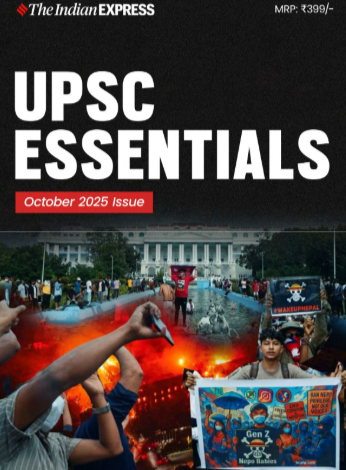
Read UPSC Magazine





- 01
- 02
- 03
- 04
- 05



